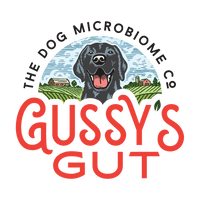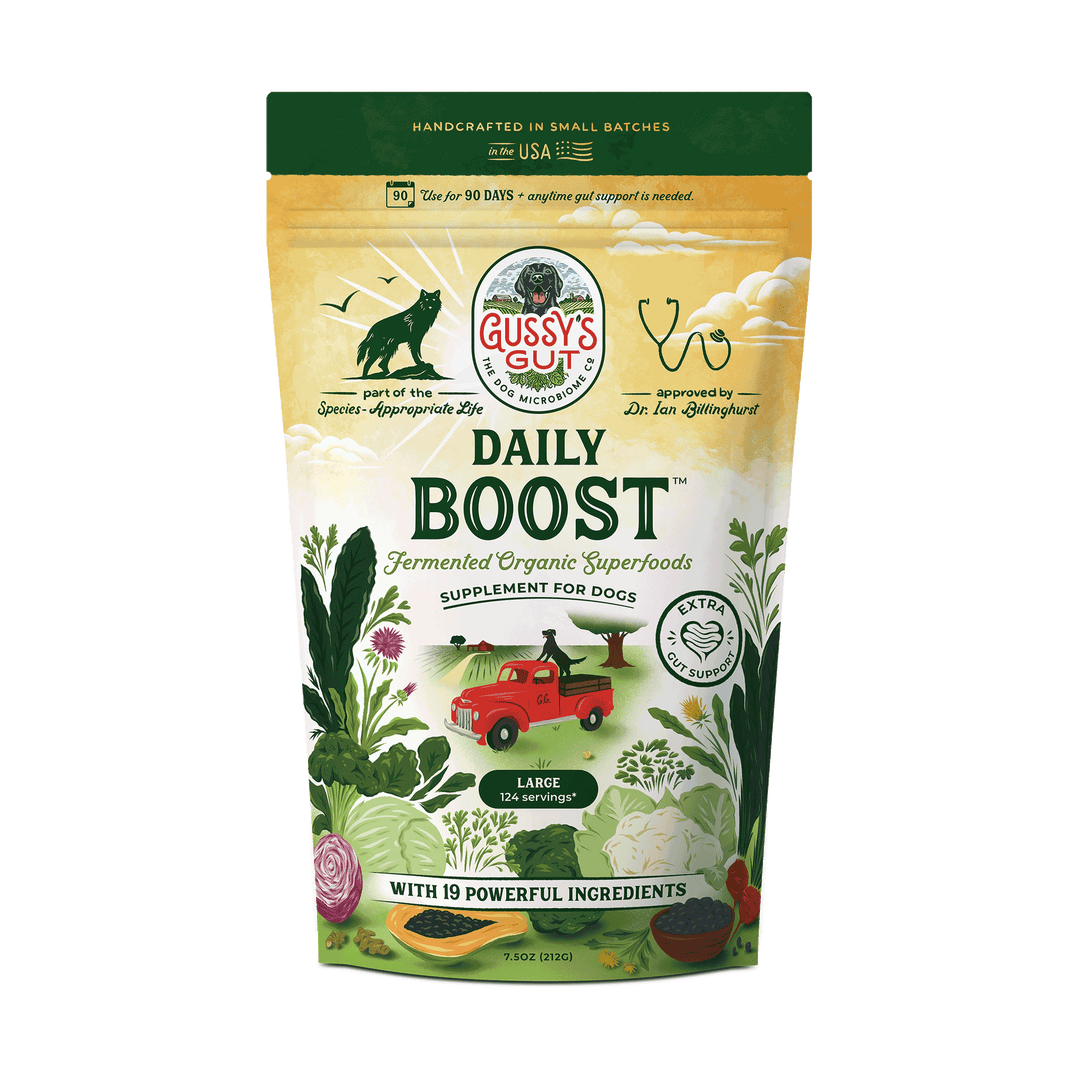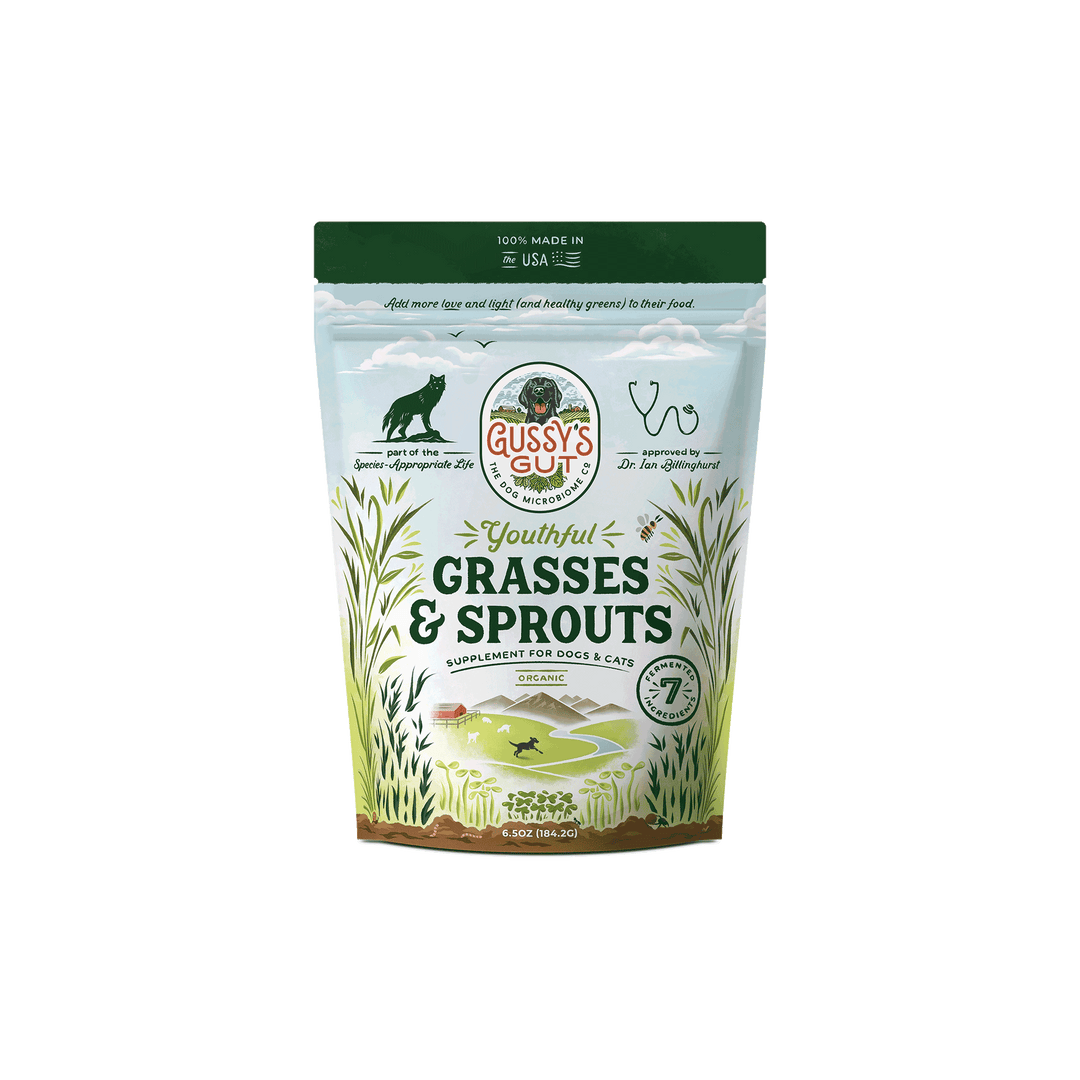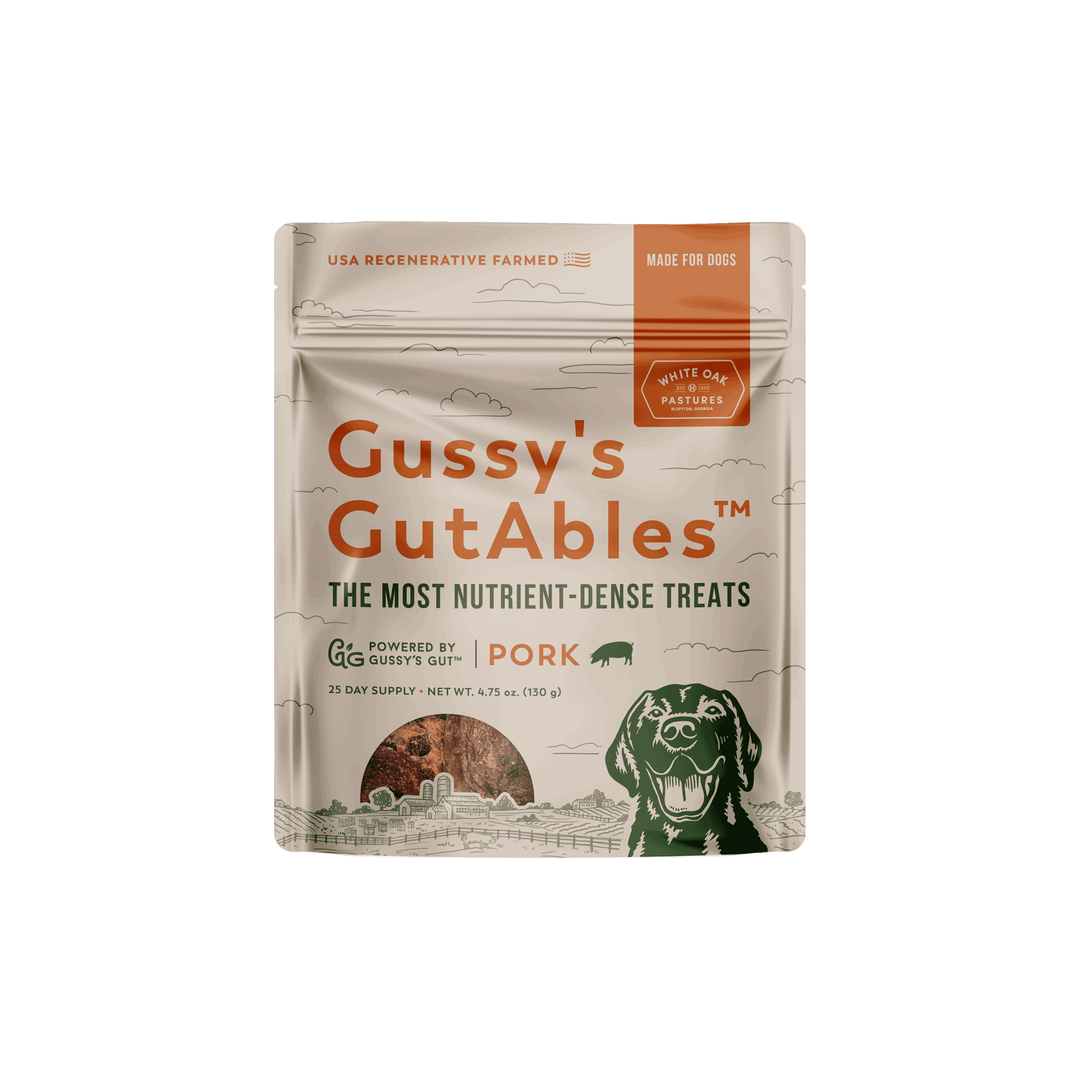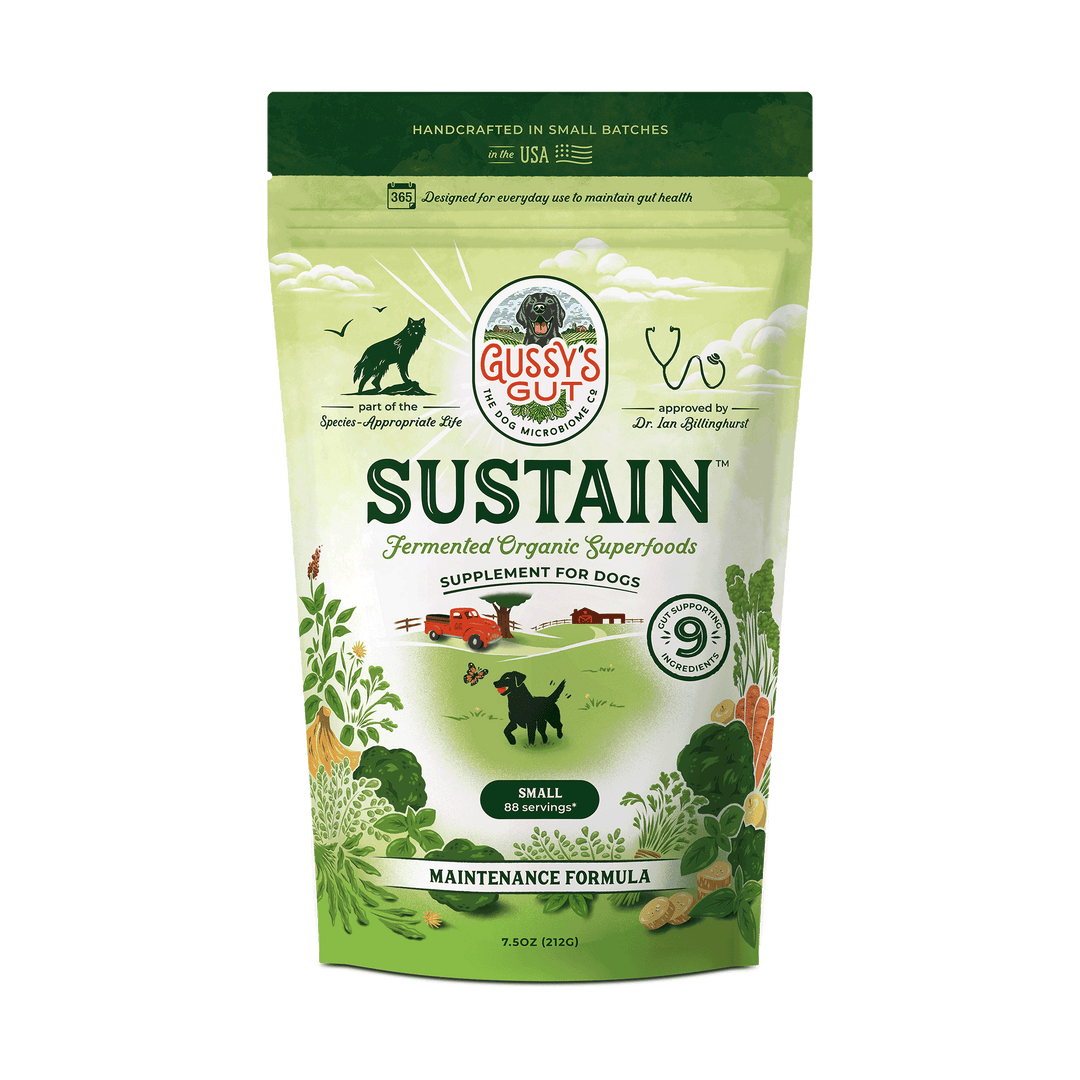A Prebiotics for Dogs Masterclass: Types, Sources, Benefits, and Considerations for Our Pets
In the world of gut health, prebiotics often take a backseat to their more famous counterparts, probiotics. But these non-digestible fibers deserve the spotlight too: they play a crucial role in nurturing the microbiome (the trillions of microorganisms living in the digestive system).
Prebiotics are essentially the "food" for beneficial gut bacteria, helping them thrive and outcompete harmful pathogens. Unlike probiotics, which are live bacteria introduced into the body, prebiotics are compounds found in certain foods that resist digestion in the upper gut and reach the colon intact, where they are fermented.
This fermentation process produces short-chain fatty acids (SCFAs) like butyrate, acetate, and propionate, which provide energy to colon cells, strengthen the gut barrier, reduce inflammation, and support overall immune function.
The importance of prebiotics cannot be overstated: they help regulate bowel movements, improve nutrient absorption, lower the risk of chronic diseases like obesity and type 2 diabetes, and even influence mental health through the gut-brain axis. For pets like dogs and cats, prebiotics can enhance digestion, boost immunity, and aid in managing conditions such as irritable bowel syndrome (IBS) or inflammatory bowel disease (IBD).
Did you know? Not all prebiotics are created equal; they vary in structure, food value, and how they interact with good gut bacteria. In other words, the good bacteria stick around if they have the right food, and those food sources are prebiotics. Let’s dive into the main types and their obecmechanisms for our pets.
The Main Types of Good Prebiotics for Dogs
Fructooligosaccharides (FOS):
FOS are short-chain carbohydrates composed of 2–10 fructose units, often linked to a glucose molecule. They are naturally found in foods like onions, garlic, bananas, asparagus, leeks, and Jerusalem artichokes.
For example, asparagus, a rich source of FOS, is included in our GutAbles™ Treats to support gut health through natural prebiotic fiber. Commercially, FOS can be derived from anything from chicory root to sucrose via enzymatic processes. So beware of the source… asparagus is superior! FOS is highly effective at promoting the growth of Bifidobacteria, which helps in producing SCFAs and maintaining gut pH to inhibit pathogens.
Inulin:
A longer-chain fructan (10–60 fructose units), inulin is closely related to FOS but distinct due to its length, which allows slower fermentation and broader microbial benefits. Sources include chicory root, dandelion greens, Jerusalem artichokes, and burdock root.
Dandelion leaf, a potent inulin source, is featured in Sustain™, providing fermented prebiotic support for year-round pet digestive wellness. Broccoli, another inulin-containing vegetable, is also incorporated into Boost™ and Sustain™ to enhance gut bacteria growth and nutrient absorption in dogs. Jerusalem artichoke (sunchoke), rich in inulin, is featured in Boost™ and GutAbles™ Treats, offering high-quality fermented prebiotic fiber for optimal gut support.
Resistant Starches:
These are starches that "resist" digestion in the small intestine, acting as prebiotics in the colon. Carrots and plantains are a natural source of resistant starches. Both are included in Sustain™ to promote regular bowel movements and gut barrier strength. Resistant starches are versatile and promote butyrate production, which is key for colon health.
Xylooligosaccharides or XOS (less desirable prebiotics in many pet supplements and chews):
Derived from plant fibers like bamboo shoots, corn cobs, or birch wood, XOS consists of xylose sugar chains. It's emerging in supplements and has strong bifidogenic effects, meaning it boosts Bifidobacteria growth efficiently. XOS is low-calorie and effective at low doses, making it ideal for fortified foods.
These types illustrate the diversity of prebiotics, each with unique benefits. But understanding their mechanisms is key to grasping their importance.
How Prebiotics Work: Mechanisms and Importance
Prebiotics function by evading enzymes in the stomach and small intestine, arriving in the colon where they serve as substrates for fermentation by beneficial microbes. This selective stimulation—favoring good bacteria over bad—leads to SCFA production, which acidifies the gut environment, inhibiting pathogens like E. coli or Clostridium difficile.
SCFAs also enhance the gut barrier by tightening junctions between cells, reducing leaky gut syndrome. Beyond digestion, prebiotics modulate the immune system (70% of which resides in the gut), lower cholesterol by binding bile acids, and even influence mood via neurotransmitter production. For example, by increasing SCFA levels, you can improve insulin sensitivity and reduce inflammation markers.
The importance lies in their preventive power: a prebiotic-rich diet can mitigate antibiotic-induced dysbiosis, support recovery from infections, and promote longevity. In pets, they help with nutrient absorption and reduce allergy risks.
The Critical Role of Sources: Quality Over Quantity
Just as there are inferior sources of protein (e.g., highly processed meats laden with additives) or fats (e.g., trans fats in fried foods), there are inferior prebiotic sources.
Inferior sources include corn (often GMO and low in diverse fibers, potentially spiked with glyphosate residues), polydextrose (a synthetic, processed fiber with limited microbial benefits and potential for GI upset), and wheat (low prebiotic content, especially refined, and common allergen with gluten issues).
GMO sources across the board are concerning due to potential pesticide exposure and altered nutritional profiles, while non-organic options may carry herbicides or heavy metals that disrupt the microbiome. For instance, non-organic corn-derived XOS might seem cheap and good enough, but could undermine gut health long-term.
In our view, the sources of prebiotics are more important than the types of probiotics you pair them with.
Organic, whole-food sources like we have in our formulas such as dandelion greens, asparagus, Jerusalem artichoke (sunchoke), plantains, moringa, cabbage, cauliflower, cilantro, parsley, lacinato kale, mustard greens, turmeric, papaya, and alfalfa sprouts offer cleaner, more bioavailable prebiotics.
These high-quality selections were made with a clear purpose. For example, sunchokes were selected for its potent and unique inulin content and unripe plantains for resistant starch, targeting very different mechanisms and processes in the gut. These diverse fibers support a balanced microbiome and good bacteria without the risks associated with processed or contaminated alternatives.
Prioritizing quality sourcing ensures the prebiotics reach the colon effectively without unwanted baggage.
Prebiotics for Pets: What to Avoid
For dogs and cats, prebiotics are vital, but sourcing is paramount. So is the recipe.
For humans, the onion family (onions, garlic, leeks) and agave plant may be okay. For pets, they can be toxic and have potential for GI upset. Wheat and corn are used a lot in pet formulas, but are less than ideal, as they can often be GMO, act as an allergen, and in our opinion, are low-value prebiotics.
Rest assured: we would never include any of these inferior and potentially upsetting ingredients in our products.
The Superiority of Fermented Prebiotics
Fermentation elevates prebiotics by breaking them down with microbes, making them more digestible and nutrient-dense. Compared to non-fermented forms, fermented prebiotics increase microbiome diversity, reduce inflammation, improve lactose digestion, and provide probiotics plus metabolites for better immune and digestive health.
For pets, Gussy's Gut exemplifies this: our fermented superfoods (e.g., Boost™ and Sustain™) ferment all of our vegetables, herbs, tubers, grasses, and sprouts, delivering prebiotic diversity with a variety of valuable polyphenols, terpenes, vitamins, and minerals.
This process transforms raw prebiotics into highly concentrated forms (1 oz equals over 1 lb of raw ingredient), aiding conditions like IBS, IBD, healthy weight management, and supports healthy aging in dogs—far superior to non-fermented supplements due to enhanced bioavailability and added live cultures.
